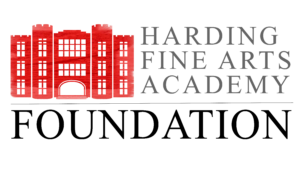Qualified Charitable Distribution (QCD)
What is a Qualified Charitable Distribution?
When planning your Individual Retirement Account (IRA) withdrawal strategy, you might wish to consider making it a donation through a Qualified Charitable Distribution (QCD).
Traditional IRAs require you to take a minimum distribution once you reach age 72. Because you did not pay federal income taxes when you contributed the money to your account, you need to pay taxes when you withdraw it. However, after age 70½ you can avoid the added tax by donating your distribution to a charity! Also called a qualifying charitable distribution (QCD).
This means that rather than paying taxes on the money, it goes directly to support the mission of Harding Fine Arts Academy Foundation. You don’t need to be rich to do this, and it can be an effective tax strategy for many.

Requirements
- You must be at least age 70 ½ when the gift is made.
- The law applies only to traditional IRA accounts. Other plans such as 401(k) or 403(b) plans do not qualify.
- The QCD(s) must be made directly from your IRA administrator to you Harding Fine Arts Academy Foundation
What are the benefits?
Making a QCD may help you:
- Lower your adjusted gross income
- Reduce impact of tax credits/deductions such as Social Security and Medicare
- Save on taxes because the donation does not count as income
- See an immediate impact with your donation!
Ready to get started?
First, contact your IRA administrator and see if they have a form that you can use to make an IRA direct charitable gift request. If that is not available, follow these three easy steps . . .
- Download and complete this letter template with all of your information.
- Mail it to your custodian.
- Sit back and relax! Your custodian will handle the rest.
The preceding outline is provided for informational purposes only and is not intended as financial, tax or legal advice. Individuals will want to discuss this with their own professional advisers and IRA administrators.
